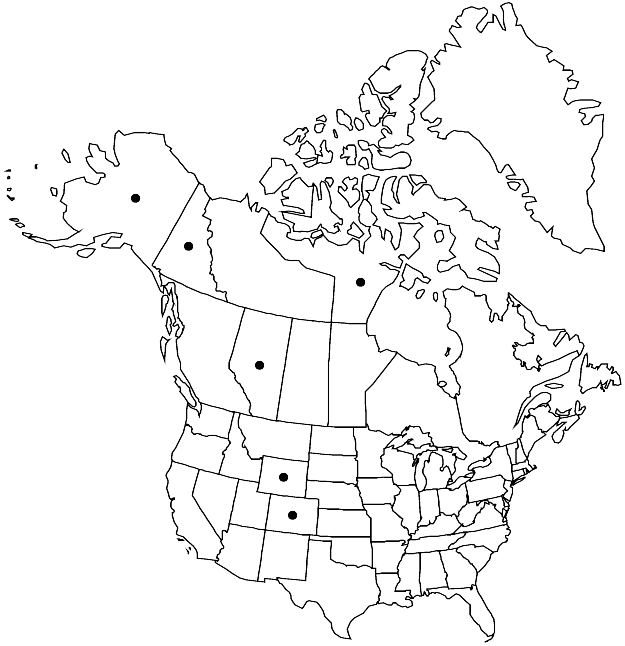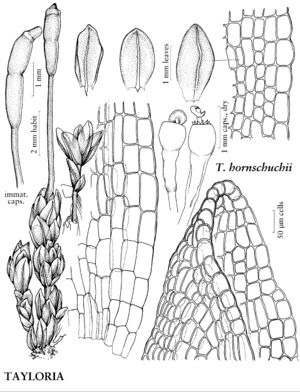Tayloria hornschuchii
in H. G. A. Engler and K. Prantl, Nat. Pflanzenfam. 216[I,3]: 502. 1903.
Plants 3–7 cm, in moderately dense tufts, brown proximally, yellow-green distally. Stems unbranched, or 6 or fewer subterminal innovations. Leaves crowded at stem and branch apices, stiffly erect-imbricate when dry, lingulate, 1–2.5 × 0.7–1.2 mm; margins plane or slightly revolute proximally, entire; apex obtuse; costa ending 3 or 4 cells before apex. Specialized asexual reproduction by brood bodies usually in proximal leaf axils. Sexual condition dioicous. Seta stramineous, shorter than 1 cm, not or scarcely twisted, stout. Capsule oblong to cylindric, quadrate mid capsule, 1 × 1 mm; hypophysis stramineous to dark red-brown when mature, 1.5 mm; columella exserted; operculum systylius, flat, apex obtuse but usually elongate; peristome inserted at mouth; exostome teeth 16, partially split into 32, erect to reflexed when dry, red to red-brown, truncate to obtuse. Spores 30–40 µm, papillose.
Phenology: Capsules mature summer.
Habitat: Humic soil, exposed soil
Elevation: low to high elevations
Distribution

Alta., Nunavut, Yukon, Alaska, Colo., Wyo., c, n Europe.
Discussion
Tayloria hornschuchii is distinguished by the well-developed, often wrinkled hypophysis, as wide as the urn and gradually tapering to the seta; systylius operculum with exserted columella; papillose exostome of 16 unpaired or partially split teeth; and dioicous sexual condition. The leaves of T. hornschuchii are crowded at stem apices and innovations and strongly keeled. The brood bodies are few to many, of six or fewer cells, and red to red-brown at maturity.
Selected References
None.
